Asam keping/gelugur are sliced and dried fruit used as a cooking condiment in Malaysian cuisine. It comes from a large tree that produced Buah Gelugor (Gelugor Fruit) that is native of peninsular Malaysia.
Taste & smell
Asam keping is used to lend a sour taste in curries and sambal. It’s used in cooking, not for eating raw.
It smells like salted dried plum to me. At my cooking class, Japanese students told me it smells like Japanese ume (plum). Some Americans thinks it smell like mushrooms.
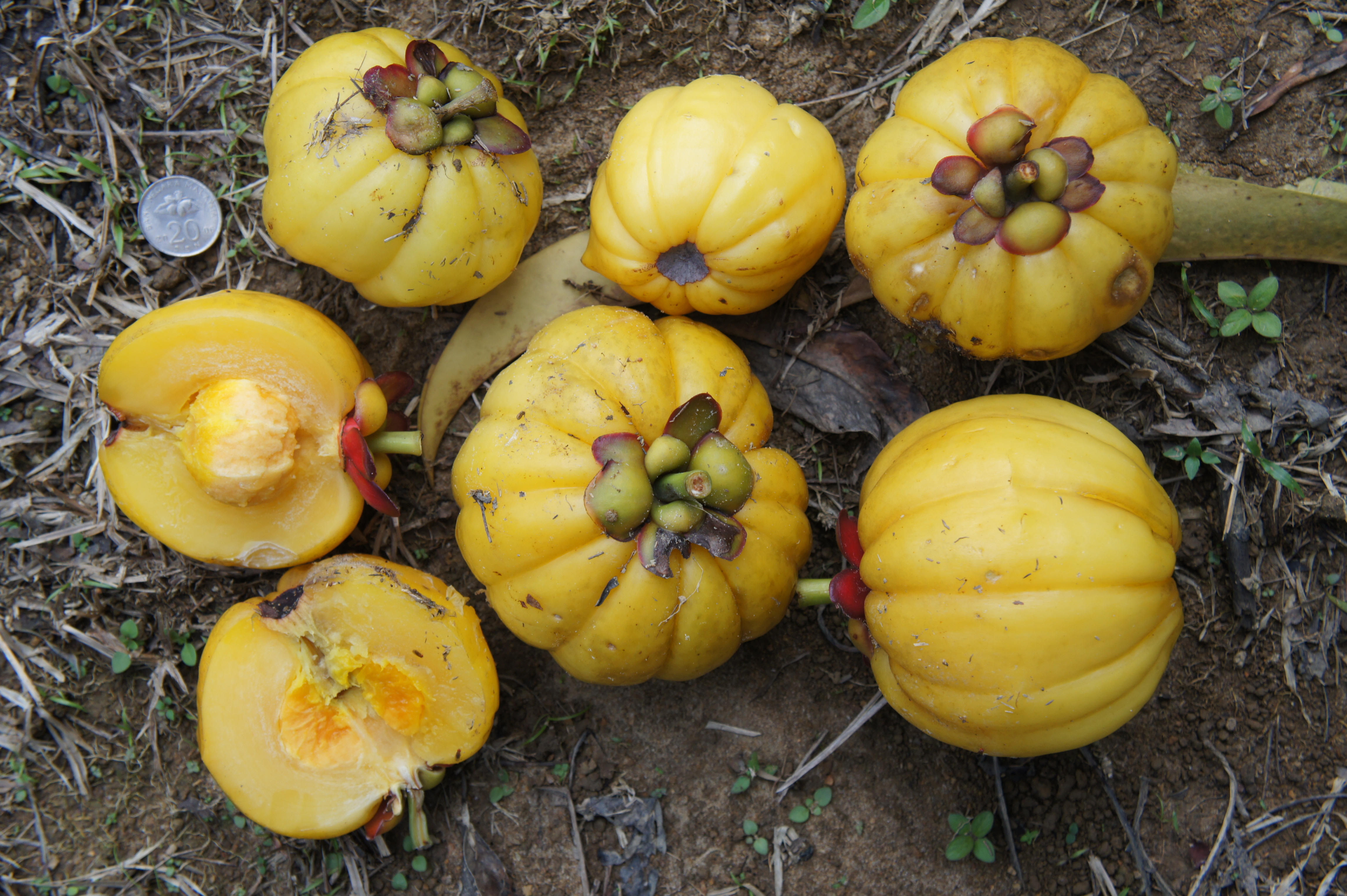
photo credit: wikiwand
Other names of asam
- English name: Tamarind slice
- Malay name: Asam keping/ asam gelugor
- Scientific name: Garcinia atroviridis
Where to buy
It’s available at the spice and dried goods section at the supermarket or morning market.
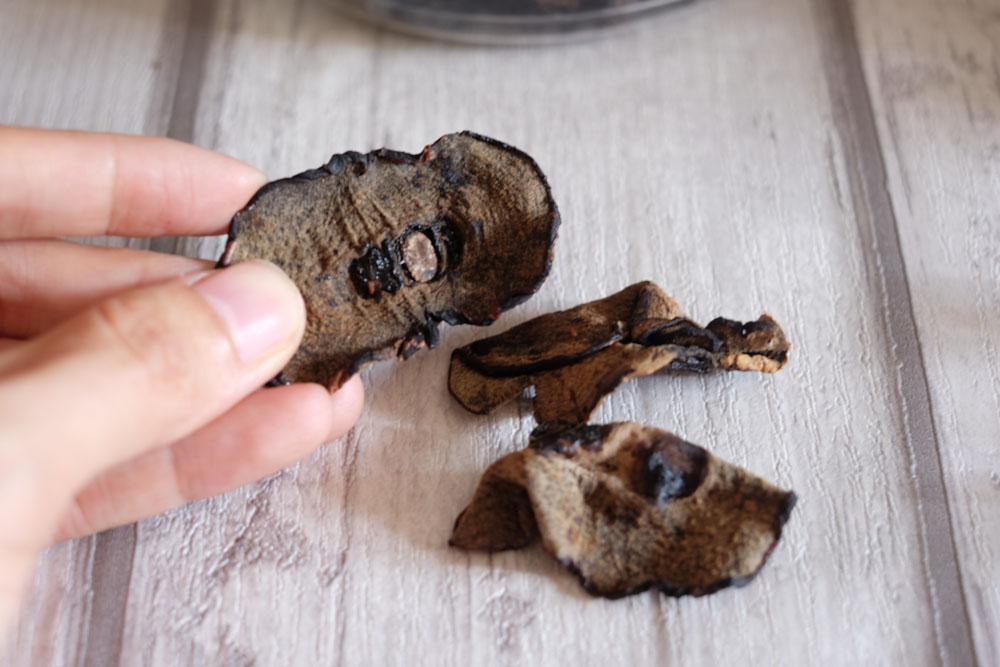
Asam gelugur vs Asam Jawa
When mentioned tamarind, most people know of tamarind paste (asam jawa) and have not seen tamarind slice (asam keping/gelugur). These two tamarind comes from different tree.
Tamarind paste (asam jawa) comes in paste form. Whereas, tamarind slice in dried slices. The latter can be used immediately in cooking. Whereas tamarind paste need to be diluted in water.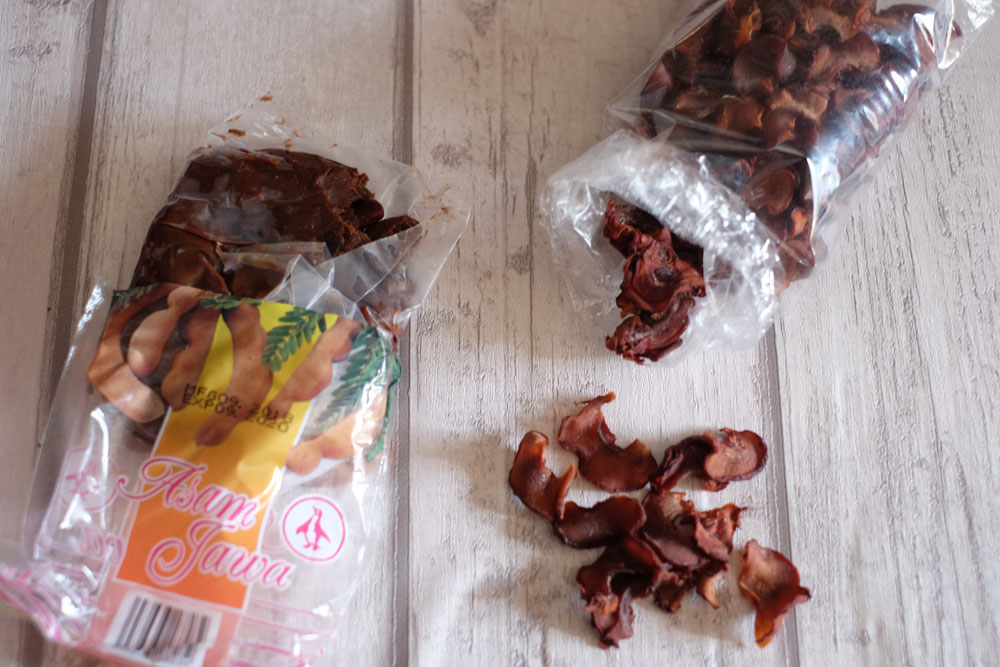
Replacement for asam gelugur
Asam jawa can generally be used to replace asam gelugur/keping. When making sambal for nasi lemak, I alternate between these two. While they are both sour agent, they taste quite different.
Asam keping is more sharp. Whereas asam jawa has a more sweeter, rounded flavour.
How to choose good quality asam keping
My Mom went to a small town in Terengganu and got a packet of newly dried asam gelugur. It’s lighter in colour. Normally, at the supermarket the asam keping is dried and dark.
Perhaps, for freshness, choose lighter and softer ones. Though living in the city, I only normally see dried dark ones and that’s fine too.
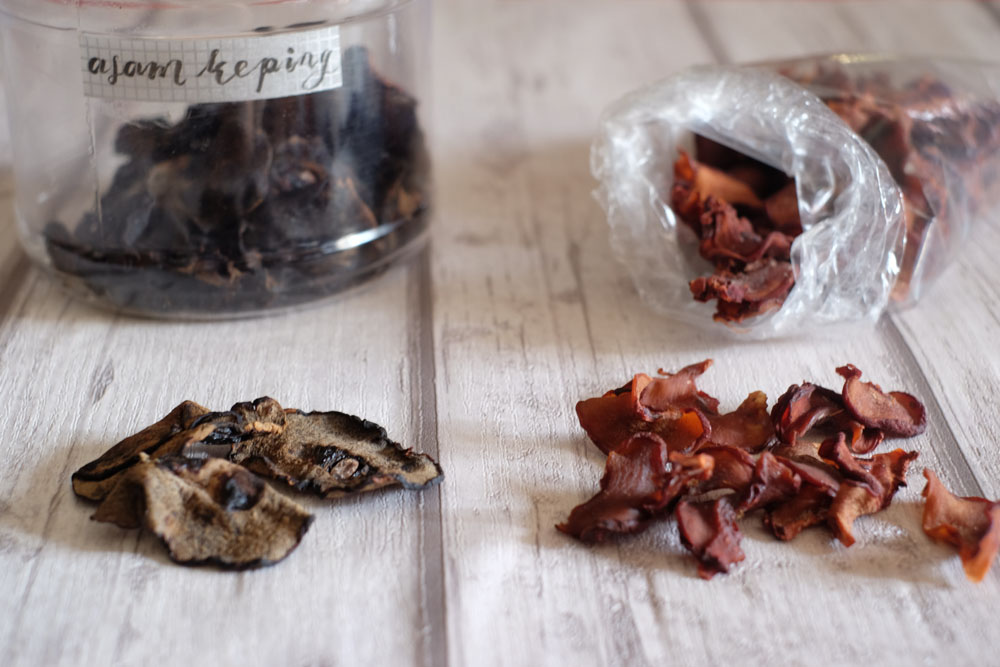
Storage
Store in a dark and dry place.
Recipes
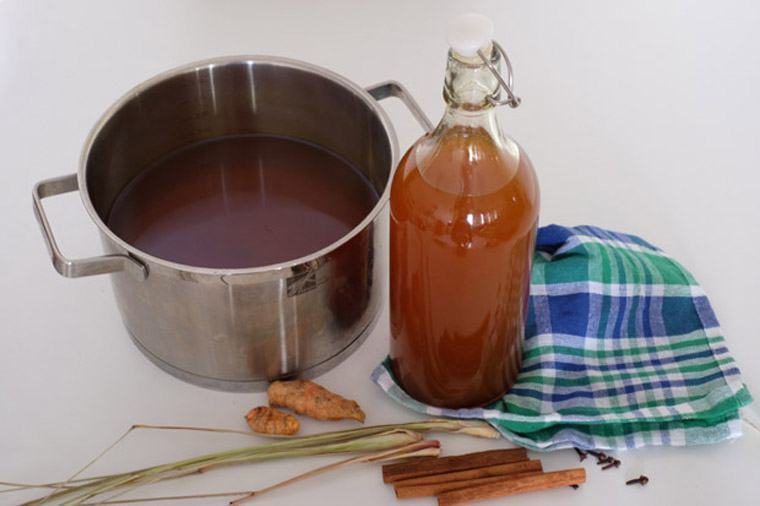

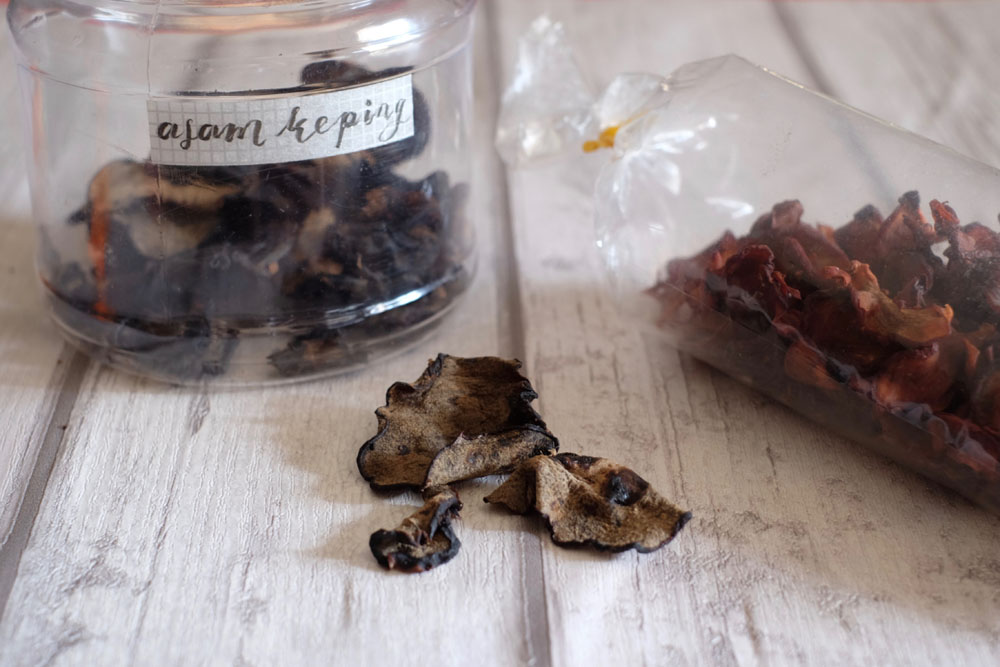
Pingback: Ikan Singgang(feat. Ginger Tea) | Mr.Aim's private place